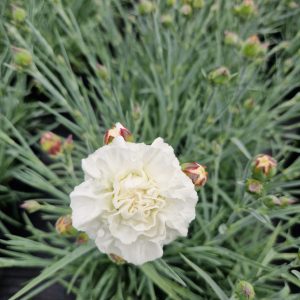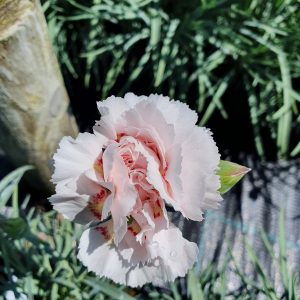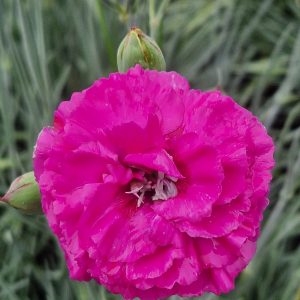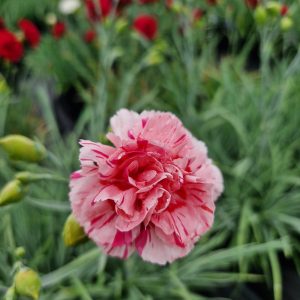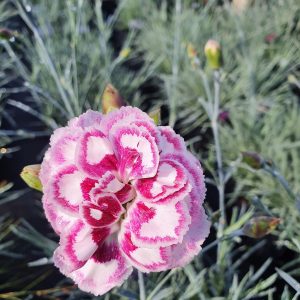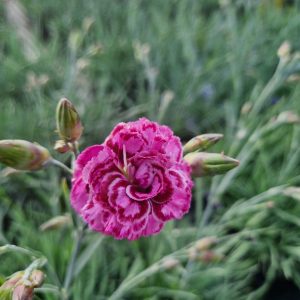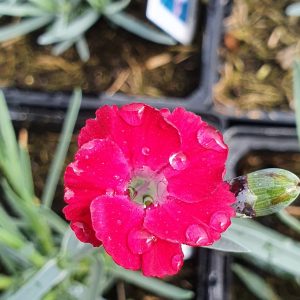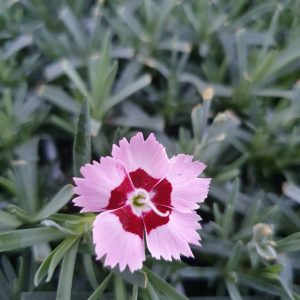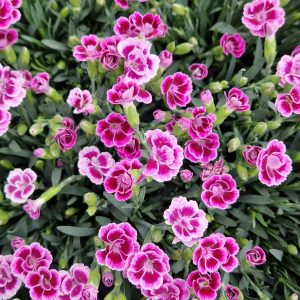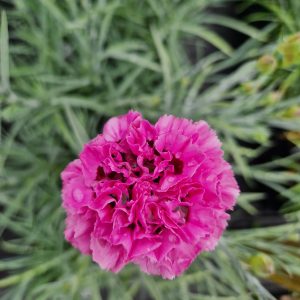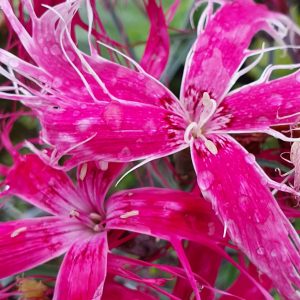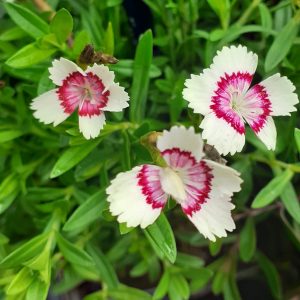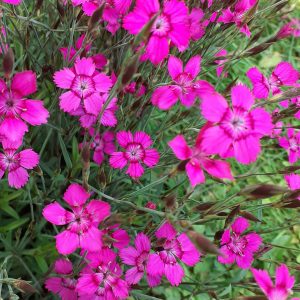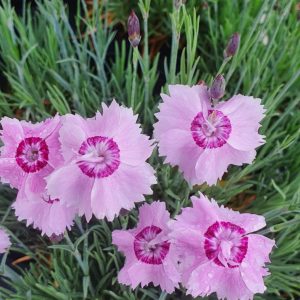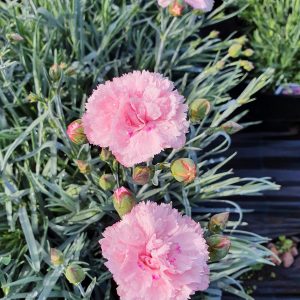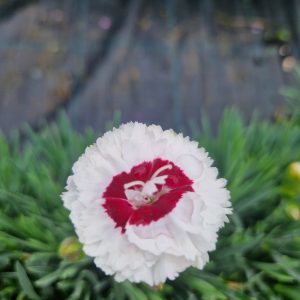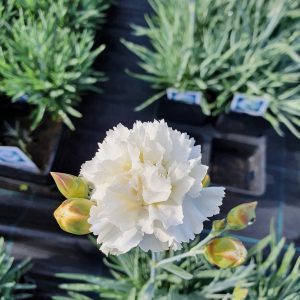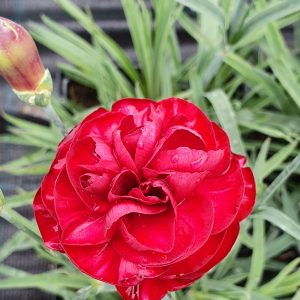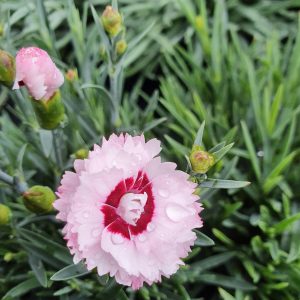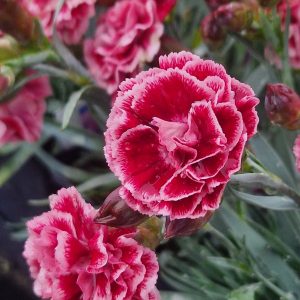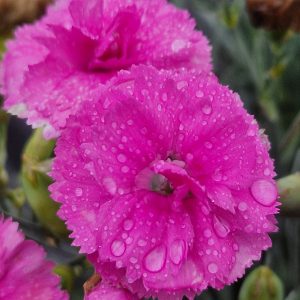Dianthus, also known as pinks or carnations, are charming and fragrant flowers that add beauty to gardens. Follow this comprehensive planting guide to ensure the successful cultivation of your Dianthus plants:
Site Selection
Sunlight Requirements: Plant Dianthus in a location that receives full sun. They thrive in at least 6 hours of direct sunlight daily.
Soil Conditions: Choose well-draining soil with a slightly alkaline to neutral pH. Dianthus is adaptable to various soil types but prefers a loamy, sandy soil enriched with organic matter.
Planting Time
Optimal Timing: Plant Dianthus in early spring or early Autumn. Spring planting allows for establishment before the heat of summer, while Autumn planting encourages strong root development.
Planting Process
Prepare the Soil: Work the soil to a depth of 8-10 inches, incorporating organic matter like compost for added fertility.
Planting Depth: Plant Dianthus at the same depth they were growing in the nursery container. Ensure the crown is at the soil surface.
Spacing: Space plants 12-18 inches apart to allow for proper airflow and prevent diseases.
Watering
Moderate Moisture: Keep the soil consistently moist but not waterlogged. Water at the base of the plant to avoid wetting the foliage.
Mulching
Organic Mulch: Apply a 2-inch layer of organic mulch around the plants. Mulch helps retain soil moisture, suppress weeds, and regulate soil temperature.
Fertilisation
Light Feeding: Dianthus is not heavy feeders. Apply a balanced, all-purpose fertiliser in spring when new growth appears. Avoid excessive fertilisation, which can lead to leggy growth.
Support
No Staking Required: Most Dianthus varieties do not require staking due to their compact growth habit.
Pruning
Deadheading: Remove spent flowers regularly to encourage continuous blooming. Trim back the entire plant after the first flush of flowers to promote a bushier habit.
Pest and Disease Management
Aphid Control: Monitor for aphids, especially on new growth. Use insecticidal soap or a strong stream of water to control infestations.
Good Air Circulation: Ensure proper spacing between plants to promote good air circulation and reduce the risk of fungal diseases.
Winter Care
Mulching: Mulch lightly around the plants in late Autumn to provide some protection during winter.
Monitoring and Adjustment
Visual Inspection: Regularly inspect your Dianthus for any signs of stress, pests, or diseases. Adjust watering and care practices based on your observations.
Enjoy the Blooms
Appreciate the Fragrance: Dianthus are known for their delightful fragrance. Take time to enjoy the charming blooms in your garden.
By following this planting guide, you’ll establish a lovely display of Dianthus in your garden. Adapt care practices based on your specific growing conditions and enjoy the beauty and fragrance these flowers bring to your landscape.



